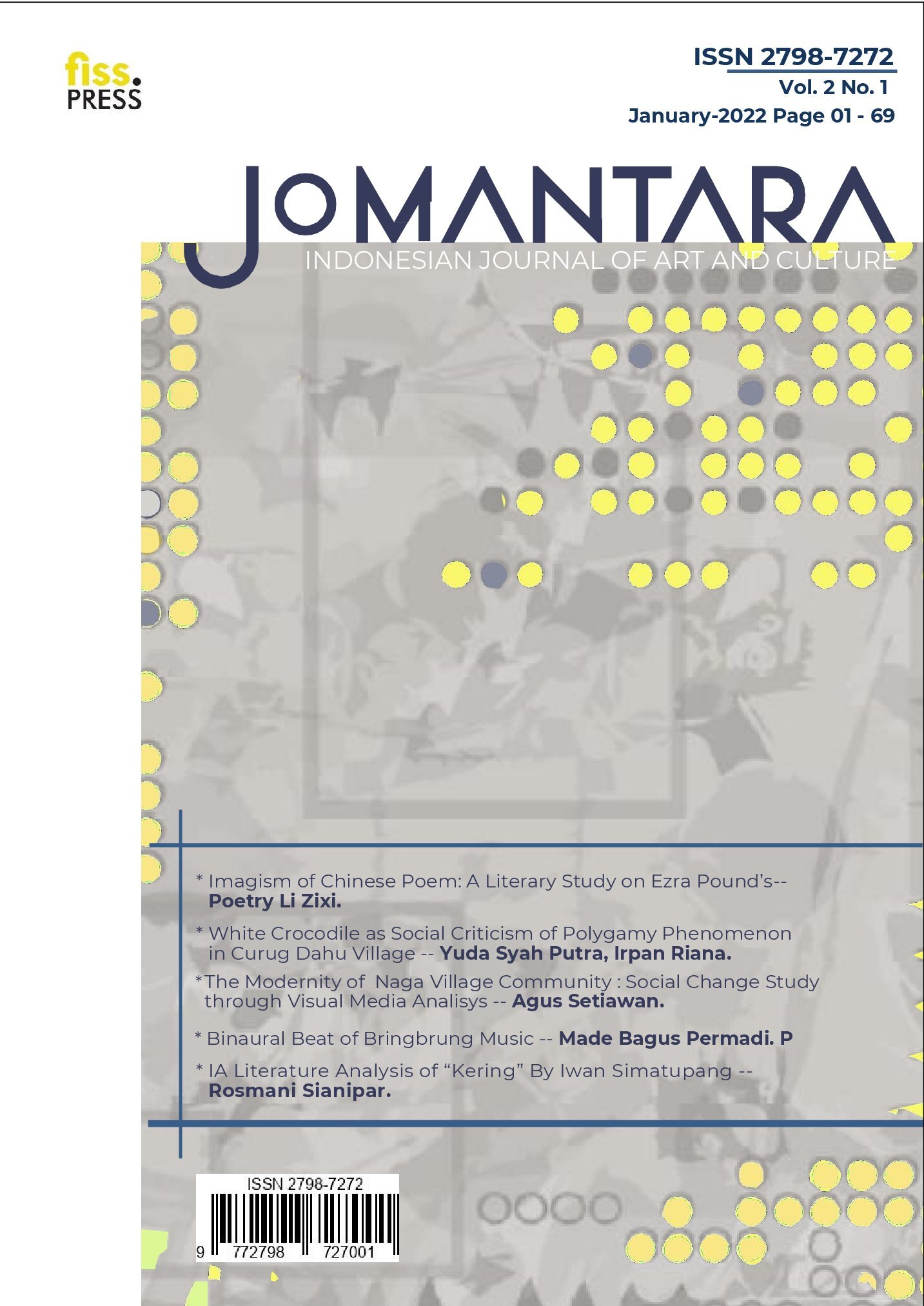Imagism of Chinese Poem: A Literary Study on Ezra Pound’s Poetry
DOI:
https://doi.org/10.23969/jijac.v2i1.5126Keywords:
Chinese poem, Imagism, Ezra PoundAbstract
Imagism aims at creating poetry as art, pursuing the clarity and beauty of language, and implying personal emotions via images. While Imagism brings the most influential change in English literature, Chinese traditional poetry with its unique cultural and historical-style stands out in world literature with rich emotional expression through images. This literary study compares Ezra Pound’s imagist poems with classical Chinese poetry, reviewing his translations of Chinese. To scrutinize the data, a qualitative research method that covers document analysis techniques was implemented comprehensively. The research reveals that Pound’s translated Chinese poems build a strong bond between the two cultures. Chinese traditional poems and Imagism poems share their love of descriptive language, a passion for accurate detail creation, joyfulness towards metaphor, analogy, personification, and other writing techniques, while they all conserve their own art form and identities
Downloads
References
Bowen, G. A. (2009). Document analysis as a qualitative research method. Qualitative Research Journal, 9(2), 27-40. doi:10.3316/QRJ0902027
Cropley, A. J. (2021). Qualitative research methods: A practice-oriented introduction for students of psychology and education (3rd ed). doi: 10.13140/RG.2.1.3095.6888/1
Gu, M. D. (1997). Fu-bi-xing: A metatheory of poetry-making. Chinese Literature: Essays, Articles, Reviews (CLEAR), 19, 1-22.
Hakutani, Y. (1992). Ezra Pound, Yone Noguchi, and Imagism. Modern Philology, 90(1), 46-69.
Hu, J., & Sun, M. (2020). Generating Major Types of Chinese Classical Poetry in a Uniformed Framework. Archives of arXiv, Cornell University, Ithaca, NY, United States. arXiv:2003.11528 [cs.CL]
Jiang, S., Zhu, L., Guo, X., Ma, W., Yang, Z., & Dienes, Z. (2012). Unconscious structural knowledge of tonal symmetry: Tang poetry redefines limits of implicit learning. Consciousness and cognition, 21(1), 476-486.
Kao, K. S. (2003). Comparative Literature and the Ideology of Metaphor, East and West. Comparative Literature and Comparative Cultural Studies, 2, 97.
McGuire, P. C. (1987). Shakespeare's Non-Shakespearean Sonnets. Shakespeare quarterly, 38(3), 304-319.
O’Leary, Z. (2014). The essential guide to doing your research project (2nd ed.). Thousand Oaks, CA: SAGE Publications, Inc.
Owen, S. (2015). The Poetry of Du Fu. De Gruyter.
Pound, E. (1913). In a Station of the Metro. Poetry, 2(1), 12.
Pound, E. (1913). A Few Don'ts by an Imagiste. Poetry, 1(6), 200-206.
Pound, E. (2010). New selected poems and translation. New Directions Publishing.
Shakespeare, W. (1989). William Shakespeare: the complete works. Barnes & Noble Publishing.
Sun, P. C., & Cheng, H. K. (2007). The design of instructional multimedia in e-Learning: A Media Richness Theory-based approach. Computers & education, 49(3), 662-676.
Wang, J. C. (1965). Ezra Pound as a Translator of Classical Chinese Poetry. The Sewanee Review, 73(3), 345-357.
Xie, M. (2015). Ezra Pound and the Appropriation of Chinese Poetry: Cathay, Translation, and Imagism. Routledge.
Zeng, D., Su, M. (1986). 蘇曼殊詩文選注. China: 陕西人民出版社.
Downloads
Published
Issue
Section
License
Copyright Notice

This work is licensed under a Creative Commons Attribution 4.0 International License.









